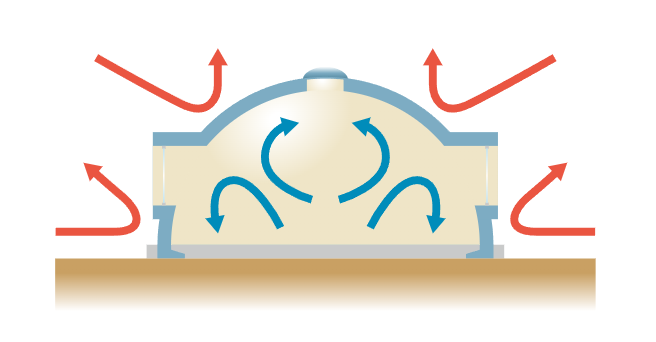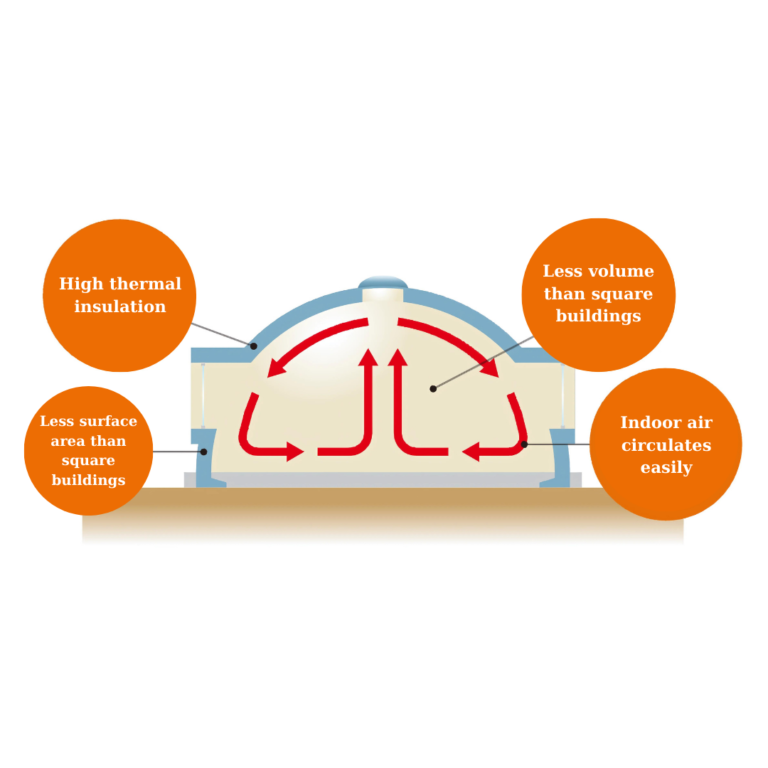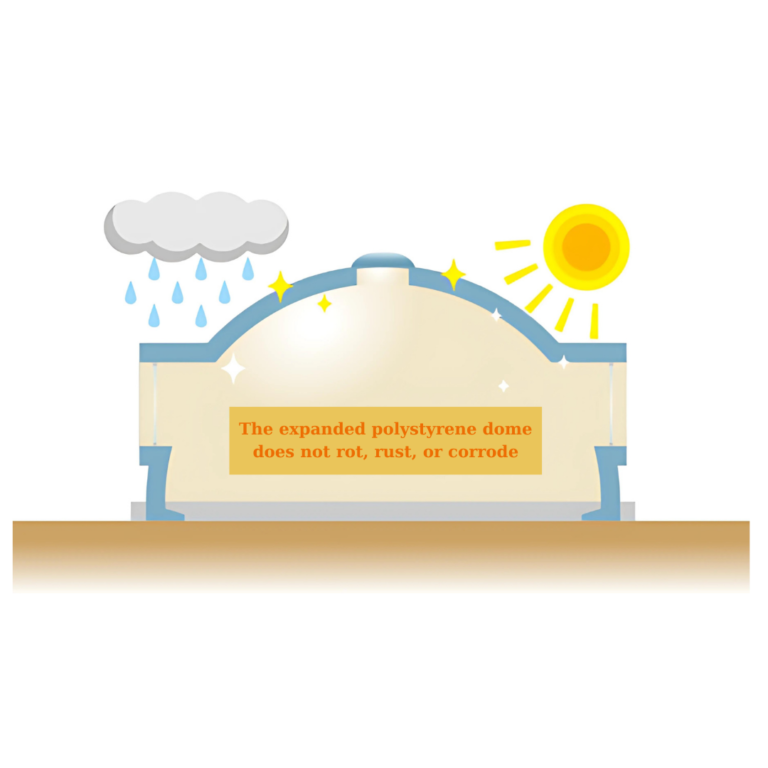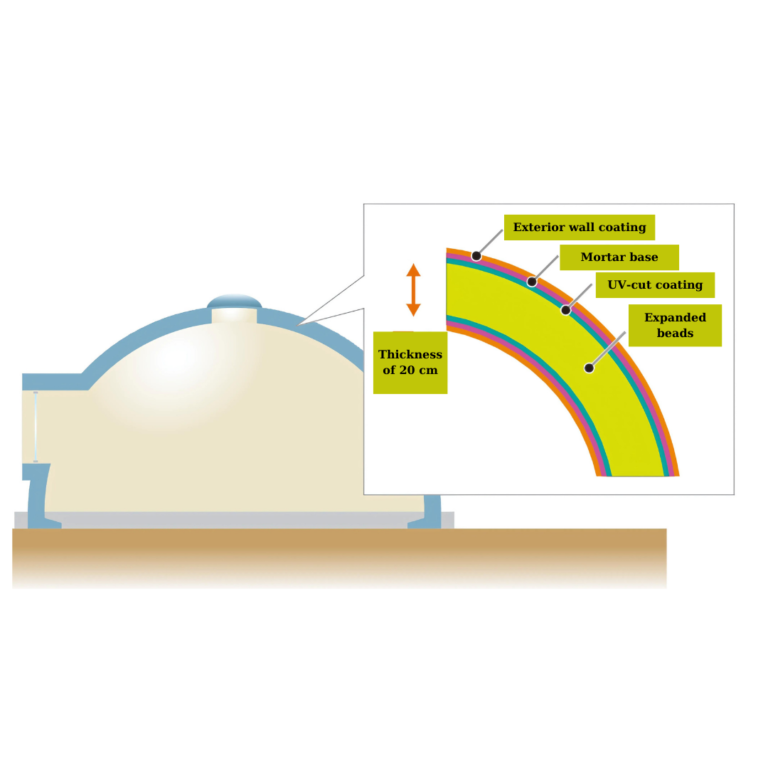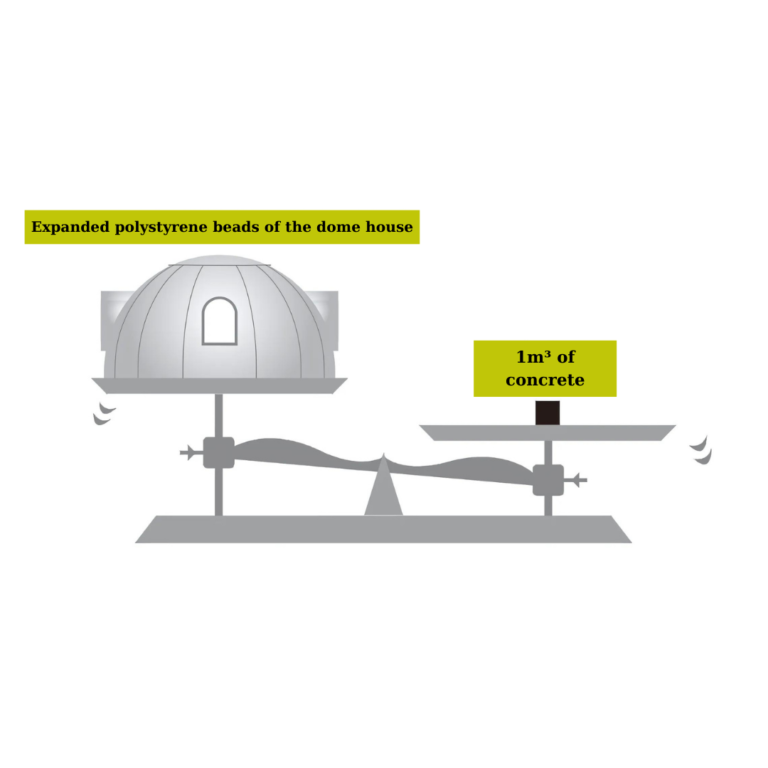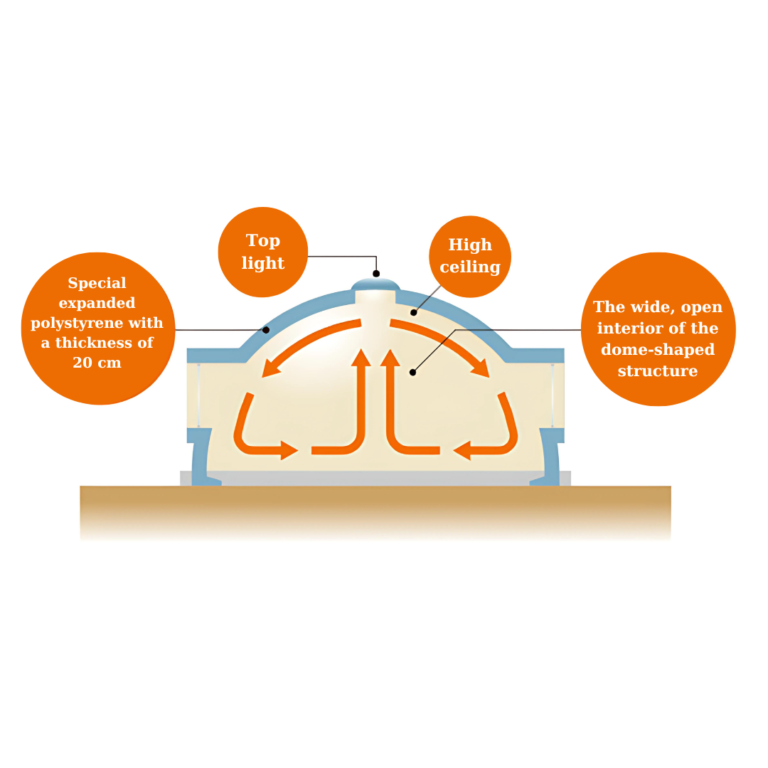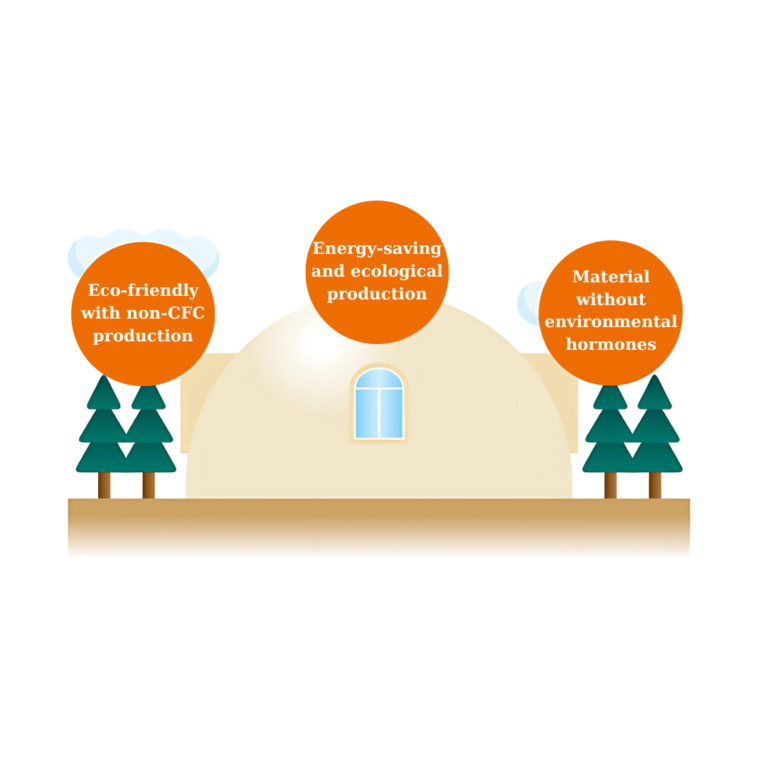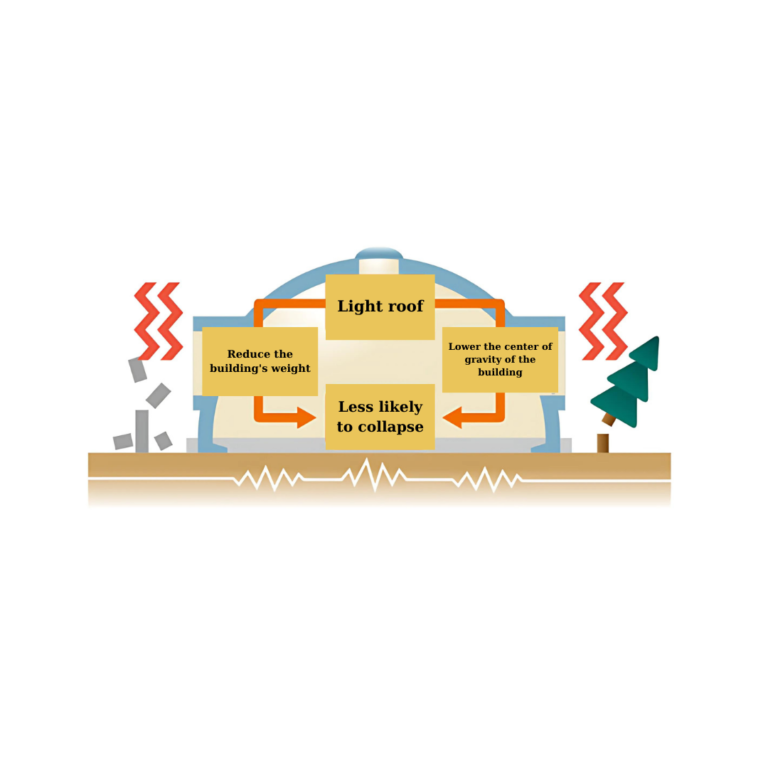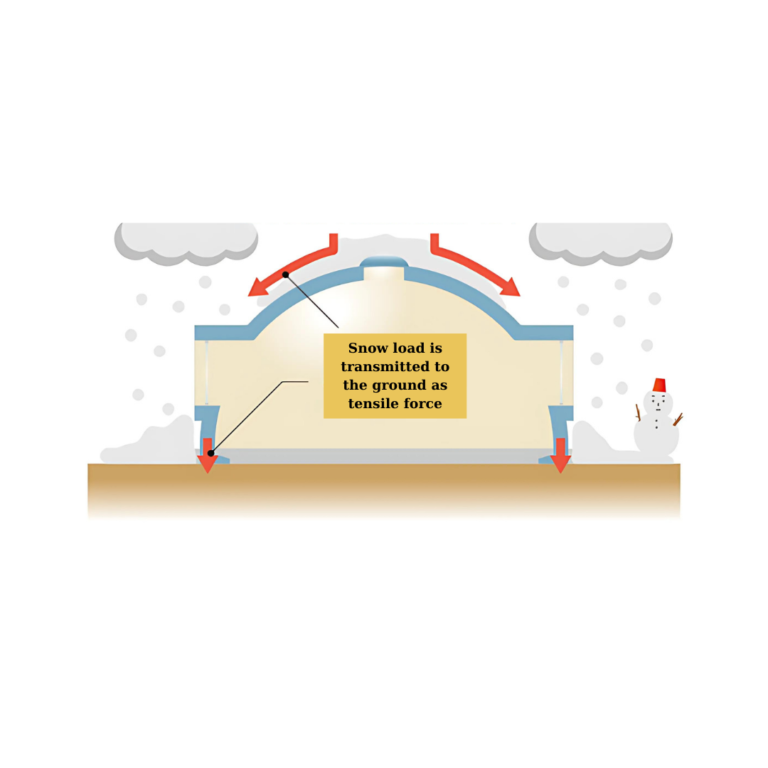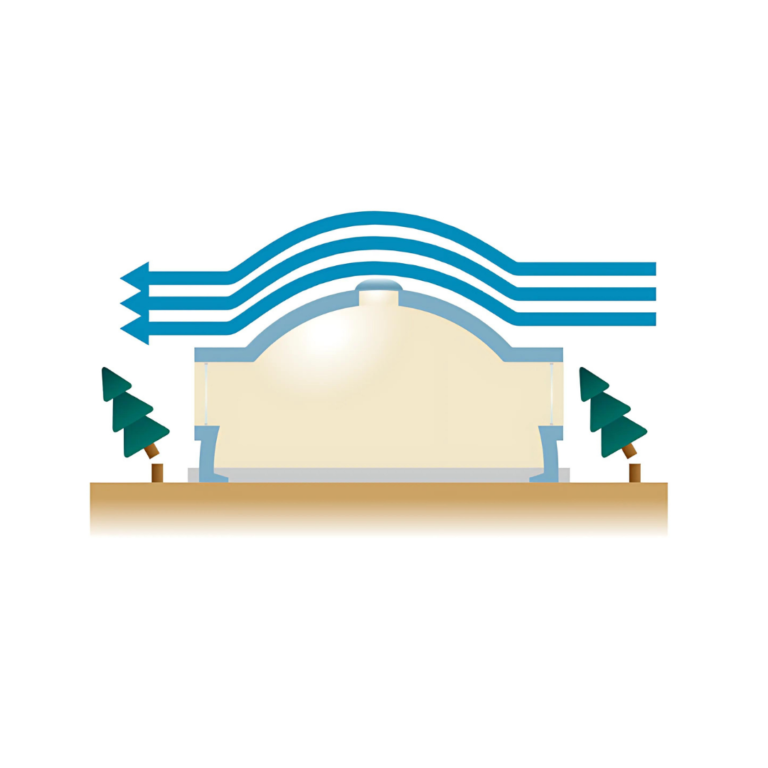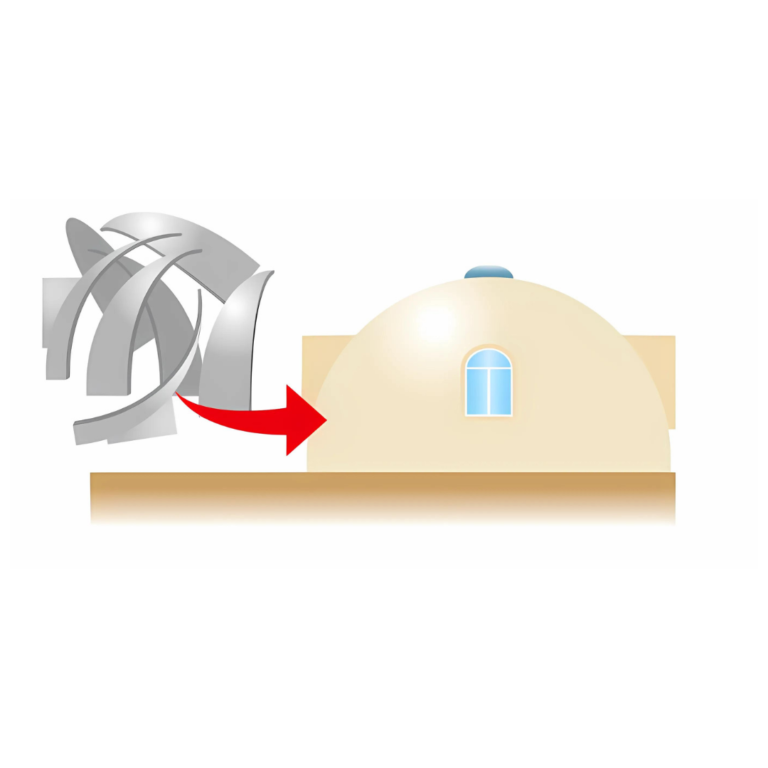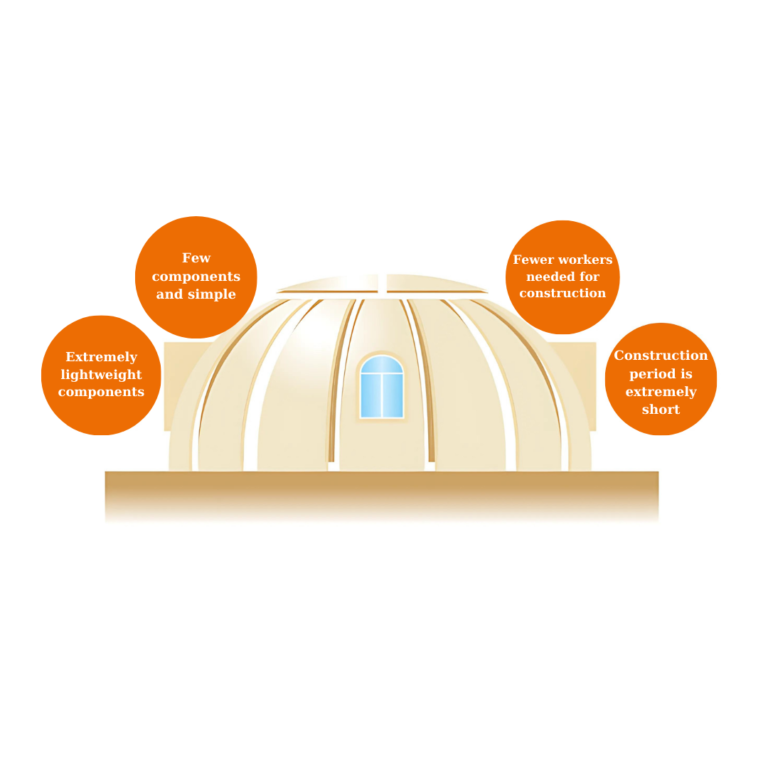Features
Features of Dome House
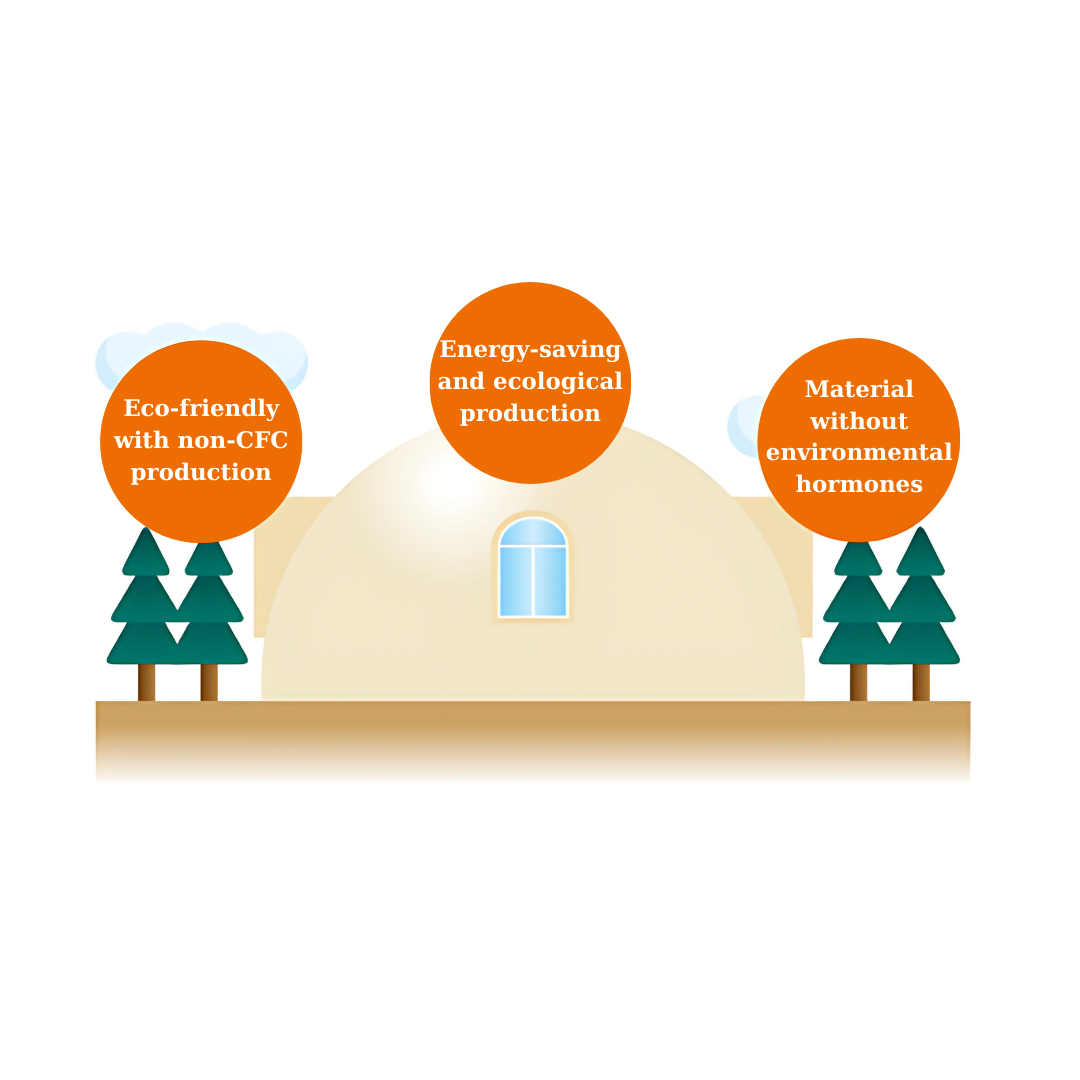
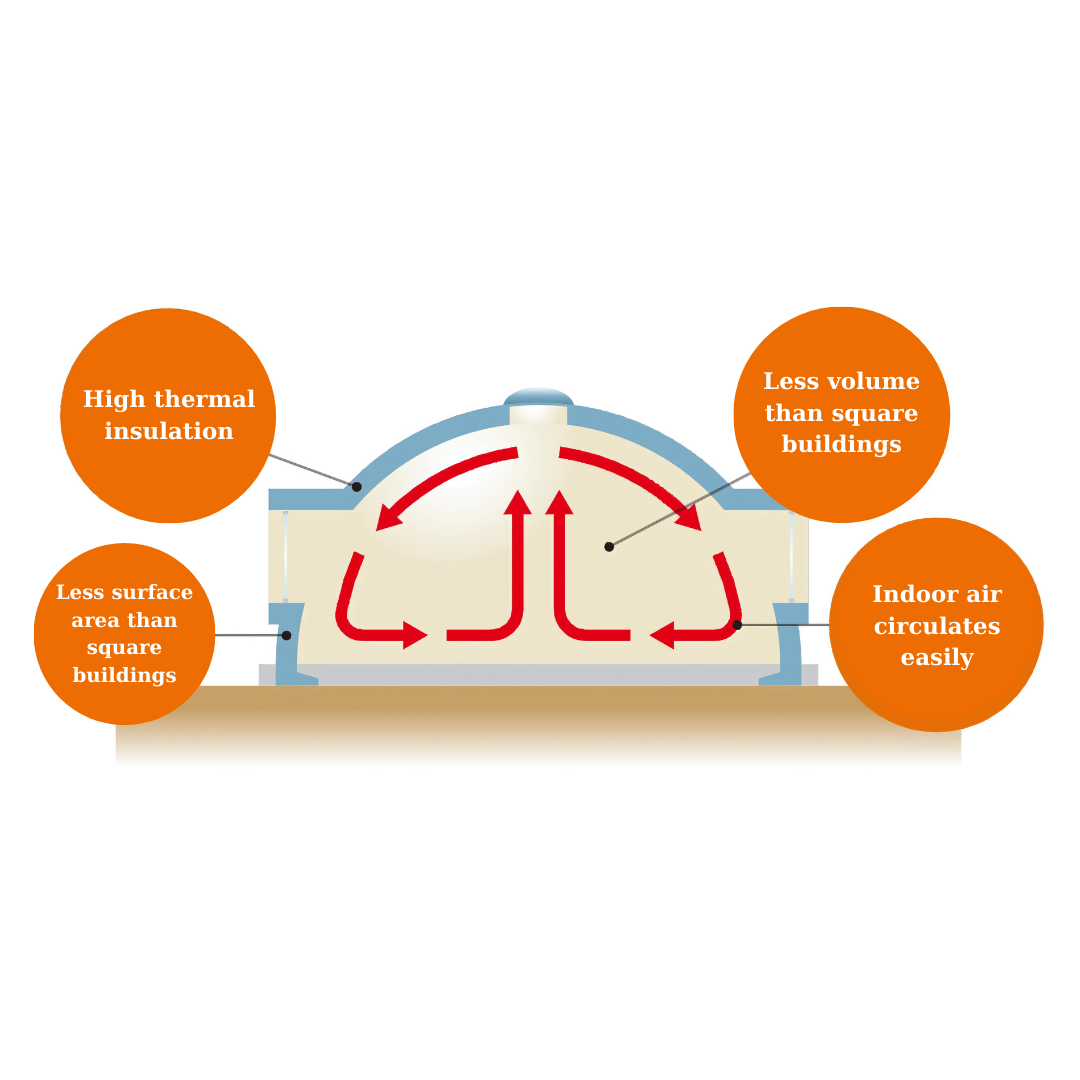
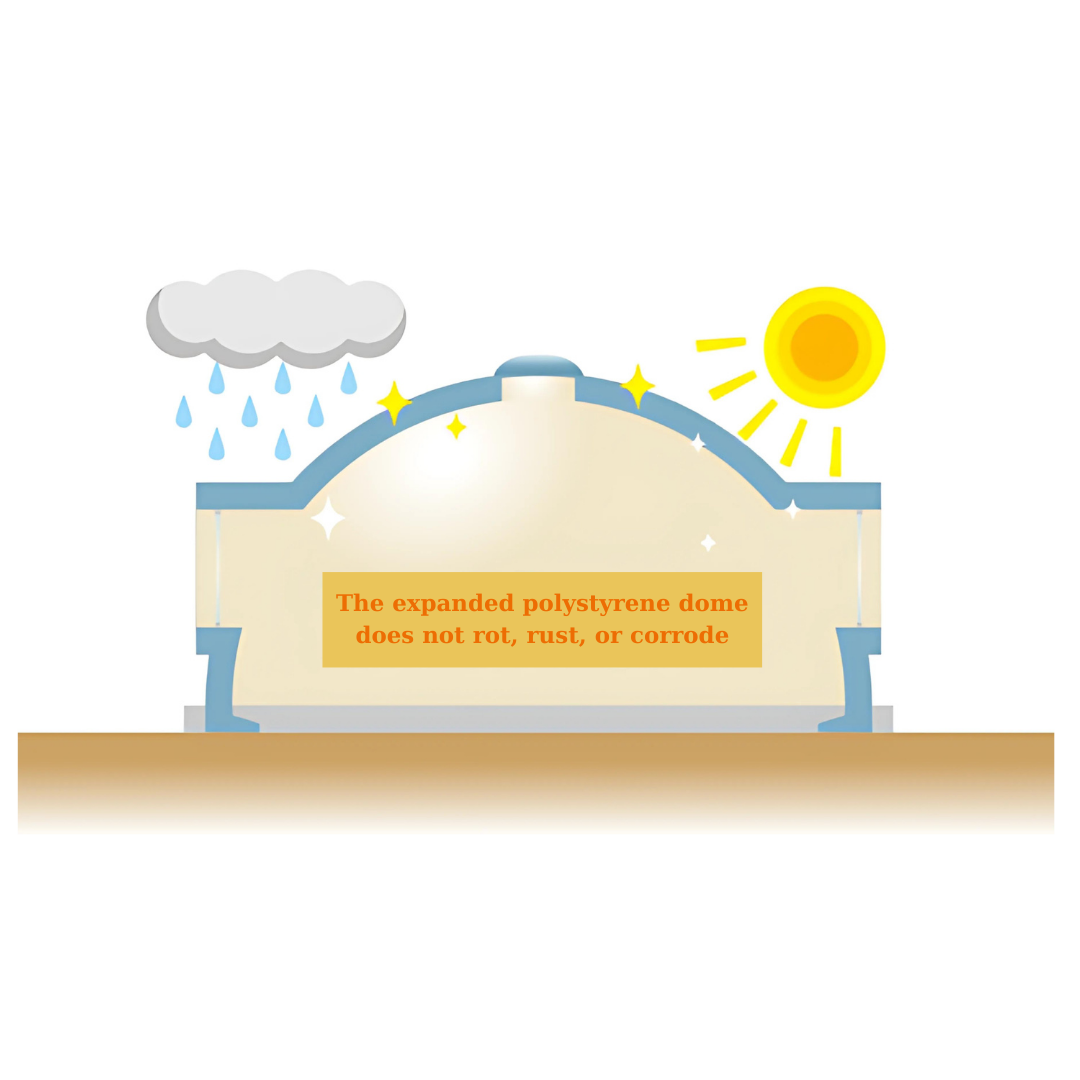
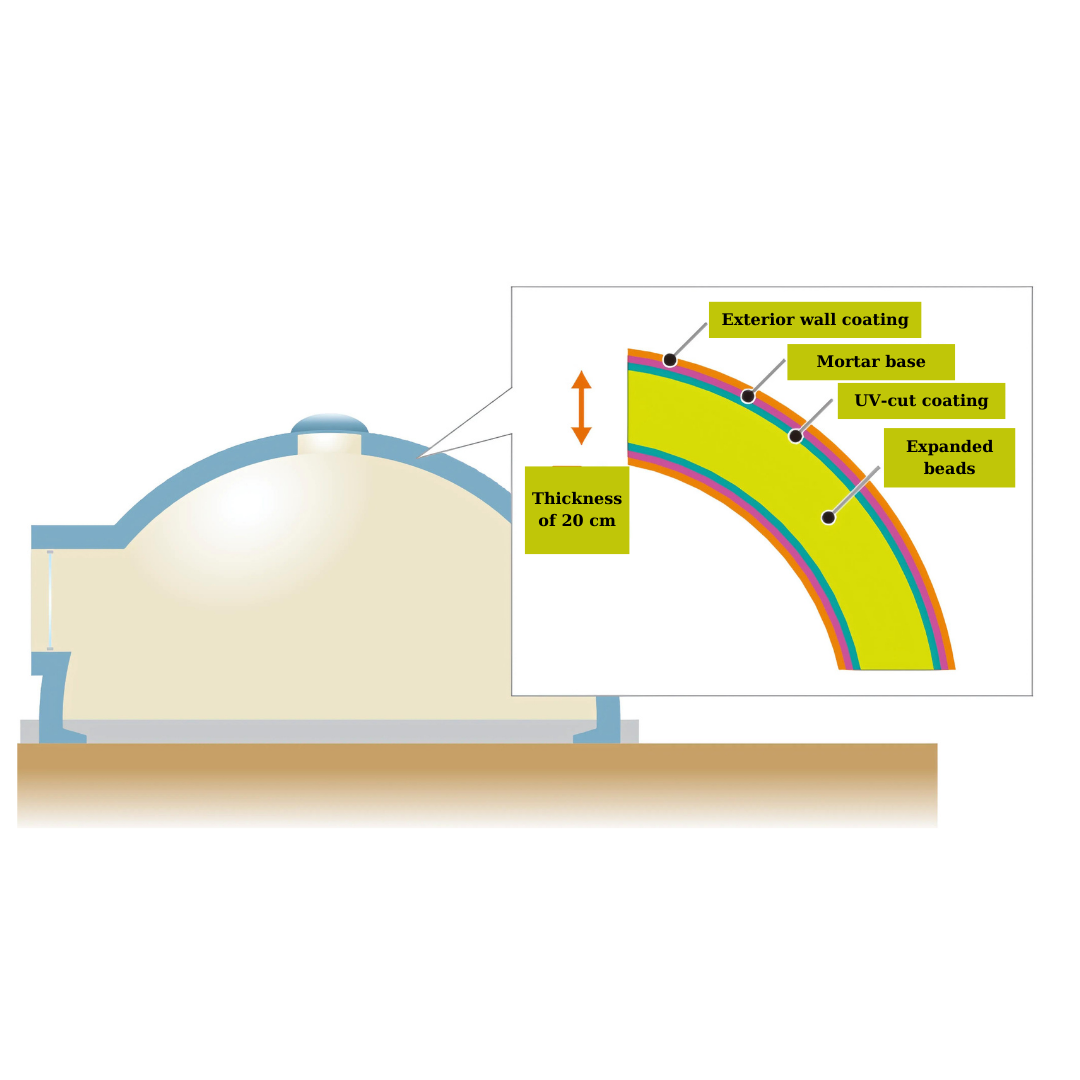
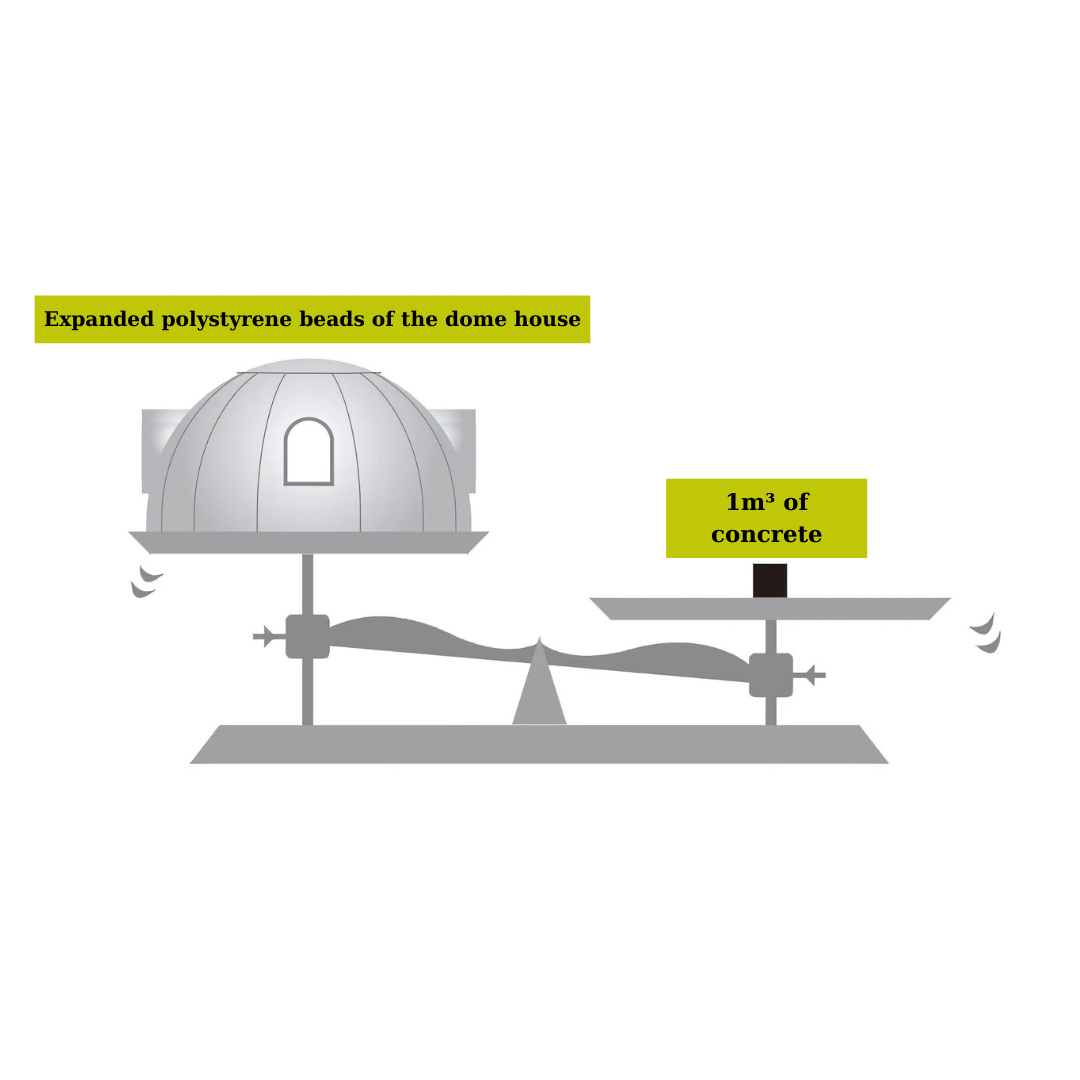
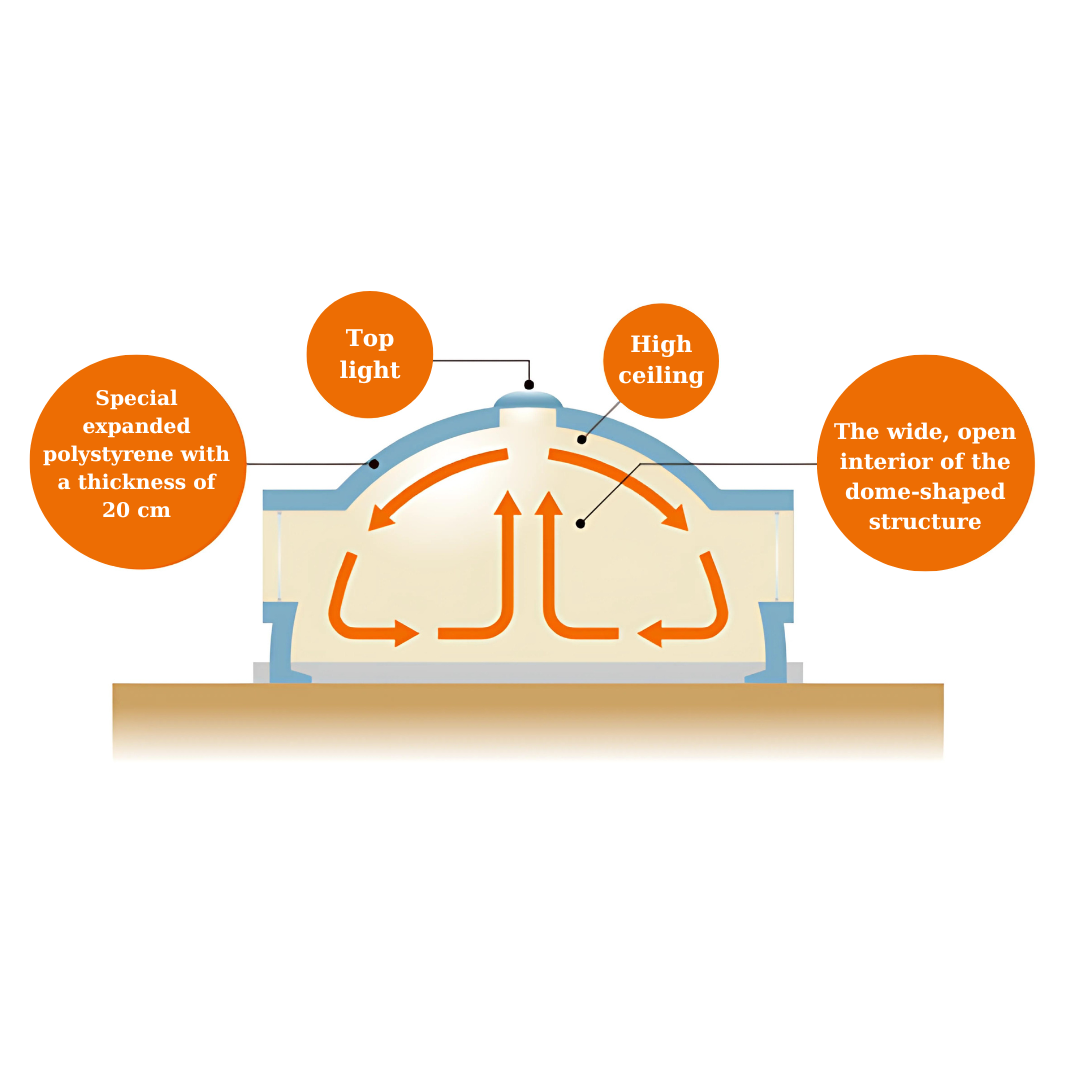
Features
1
Excellent thermal insulation
Special expanded polystyrene with a thickness of 20 cm. Expanded polystyrene is an excellent insulator due to its air content. Dome houses made of 20 cm thick expanded polystyrene effectively block external heat and retain indoor temperatures.
2
Energy-saving Building
A dome shape that minimizes heat loss. Its high insulation and resistance to external factors allow energy savings by requiring minimal energy to regulate indoor temperatures. Additionally, the dome shape minimizes heat loss, enhancing its energy-saving effect.
3
Excellent Durability
The dome shape is the most structurally stable form. The expanded polystyrene dome does not rot, rust, or corrode. The dome shape is the most structurally stable form. Furthermore, expanded polystyrene does not rust or rot and is highly resistant to changes caused by UV rays, chemicals, or heat, offering semi-permanent stability.
4
Surface Treatment
Multiple surface treatments, including UV-cut coatings, are applied to the 20 cm thick expanded polystyrene, enhancing its strength and durability.
5
Ultra-lightweight Material
An ultra-lightweight structure, approximately 970 kg per unit. Dome houses are assembled using pieces made of expanded polystyrene. The total weight of expanded polystyrene for one house is only about 970 kg.
6
Peaceful Space
A wide and open interior space. The interior of a dome house is far more spacious and open than its compact exterior might suggest. The lack of corners in the space creates a feeling of tranquility, and it is also a safe space, well-protected from any external environmental factors.
Resistance: Disaster performance
1
Earthquake Resistant
Being extremely lightweight and having a low center of gravity, it poses a much lower risk of collapse compared to typical structures. Additionally, due to its simple structure with no columns, the roof won’t collapse, ensuring safety even in strong tremors.
2
Snow Load Resistant
Expanded polystyrene is highly resistant to compressive forces, a notable characteristic of the material. In addition to this characteristic, the dome shape’s strong structure and round form provide excellent snow load resistance.
Good Workability
1
Ultra-short Construction Period
Dome house construction involves assembling pieces. Each piece weighs only about 80 kg. The process is simple, and with 3 to 4 people, it can be completed in about 7 days. (After the foundation work is completed, the time may vary depending on the location and weather conditions.)
Development and Performance of Dome House
Our ‘Special Expanded Polystyrene Dome House’ has met strict standards for all conditions, including earthquakes, wind, and snow, and has been certified by the Minister of Land, Infrastructure, Transport and Tourism as the fourth structural material, following wood, steel, and concrete. Its high performance has also been demonstrated in experiments conducted by various research institutions.
| Date | Description | March 2004 (Heisei 16): | Company Established |
|---|---|
| May 2005 (Heisei 17): | Model 7000 Dome House certified by the Ministry of Land, Infrastructure, Transport and Tourism |
| May 2009 (Heisei 21): | Began joint research with Kanazawa Institute of Technology |
| April 2011 (Heisei 23): | The Arch Dome for horticultural facilities was deemed structurally safe according to the "Safety Structural Standards for Horticultural Facilities" set by the Japan Greenhouse Horticulture Association. |
| February 2012 (Heisei 24): | Model 7700 Dome House certified by the Ministry of Land, Infrastructure, Transport and Tourism |
| May 2013 (Heisei 25): | Began joint research with Chiba University |
| September 2013 (Heisei 25): | Model 7700 Arch 1, 2, and 3 certified by the Ministry of Land, Infrastructure, Transport and Tourism |
| April 2015 (Heisei 27): | The Ministry of Agriculture, Forestry and Fisheries, the Ministry of Economy, Trade and Industry, and the Ministry of Land, Infrastructure, Transport and Tourism recognized that agricultural domes do not require a building confirmation application and can be treated in the same manner as greenhouses on agricultural land. Let me know if you need further assistance! |

Model 7000 Dome House

Model 7700 Dome House

Model 7700 Arch No. 3

